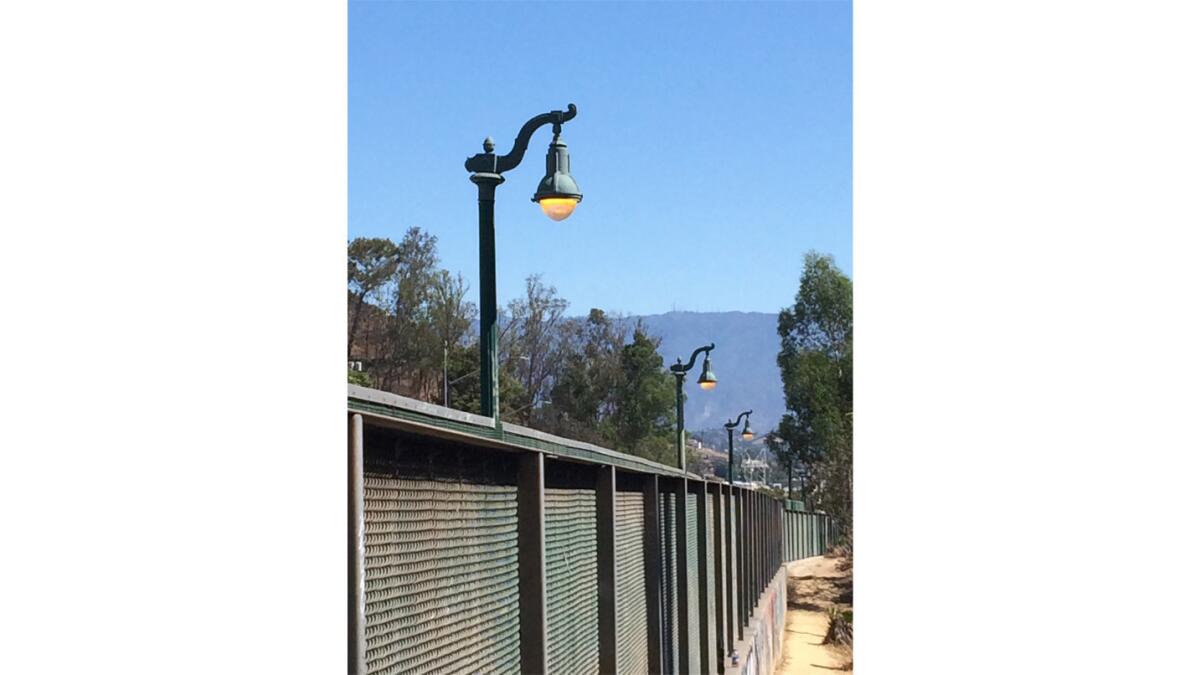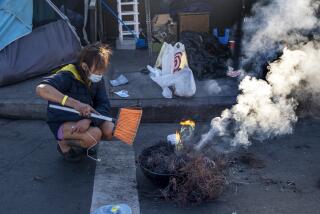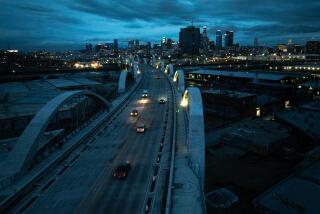Graffiti prompts ‘automatic’ freeway lights to keep on burning

These faux beaux-arts gas lights have been burning 24/7 for about two weeks along the Pasadena Freeway.
It would be easy not to notice.
Once the impression has been fixed, though, it’s hard not to make a mental check every morning to count the days and wonder why the faux beaux-arts gas lights on the Pasadena Freeway are burning 24/7.
It’s been about two weeks. How long exactly is impossible to say because there was no precise trip-point that caused a couple of dozen lights to stop shutting down, as they’re supposed to, at dawn.
The malfunction was not the result of a mechanical failure like a blown fuse or a wayward timer. Neither was it exactly a bureaucratic meltdown, though a fix could have been made easily enough before The Times phoned Caltrans to ask, “What’s up?”
The explanation offered by Caltrans’ spokeswoman Yessica Jovel is that the modern electronics inside the 19th-century styled light standards was tricked by the lowest-tech form of mischief—graffiti.
A tagger got into the locked catwalk along the freeway and spray-painted over the photovoltaic cells that normally turn the lights on at dusk and off with the rising sun. As far as the lights know its perpetual midnight along that short, bucolic strip where the southbound Arroyo Seco Parkway arcs over the tunnels into downtown.
The graffiti attack, evidenced by the appearance of large, bold letters on the man-made rock wall that looms over the east side of the freeway, has been a rarity since Caltrans re-fashioned the parkway in 2010 using the period lights to restore some of the historic character of the city’s oldest freeway.
“Without putting in the original lampposts we had lampposts fabricated similar to the original design,” said Patrick Chandler, another Caltrans spokesman.
To discourage graffiti Caltrans planted a fast-growing vine that quickly covered the concrete imitation rock wall in its tentacles.
Whether it’s the drought, or simply the vine’s life-cycle coming to an end, the surface of the textured concrete appears to be more exposed recently, creating that object that is irresistible to the street artist, an open surface visible to tens of thousand of people every day.
Caltrans has the the lampposts on its maintenance schedule, Jovel said. The lights should go out someday soon.
Follow @LATDoug on Twitter
More to Read
Sign up for Essential California
The most important California stories and recommendations in your inbox every morning.
You may occasionally receive promotional content from the Los Angeles Times.











